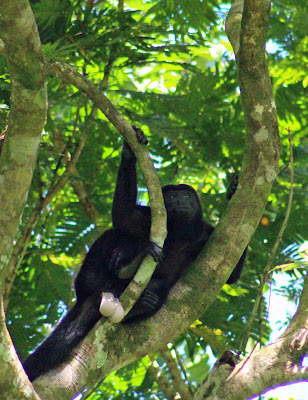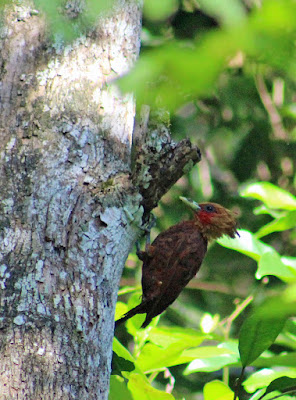The Independence Day Parade or
Quince de setiembre desfile (like the U.S. 4th of July). I’m presenting a few of my photos in three posts: Post 1-adult/university, Post 2-teen/high-school, and Post 3-children/primary.
Most of this post is of ADULT & COLLEGE STUDENT PARADE PARTICIPANTS
 |
Literally thousands of Costa Rican flags were in the 2.5 hour parade
with every band, school, organization, etc. |
 |
These three boys and the grandmother with small child were
directly across from me during the whole parade, so in other photos too. |
 |
Ladies in traditional dress on truck/float for one of the two
Adult Continuing Education Universities nearby. |
 |
The farmer’s university had beautiful traditional dancers in pairs
dancing down the street which was beautiful! |
 |
One of the above dancers up close.
This is the only time of year you can see the traditional clothing/dancing. |
 |
| Even small universities have bands! |
 |
| Seldom see a sax in a high school band |
 |
| With trumpets being a little more common. |
 |
| All ages are training in farming and livestock raising. |
 |
| Atenas is full of beautiful, friendly, and smart people! |
 |
| Young cowboys everywhere love to show off! |
 |
| And I couldn’t settle on just one roping photo! |
 |
This reminds me of my days at Will Rogers High School, Tulsa, Oklahoma
where we had ropers instead of baton twirlers leading our marching band.
And our ball teams were called the “Will Rogers Ropers!” There 1955-58. |
 |
Some of these young adults are the future of the farms surrounding Atenas!
It is a town about the size of Warren, AR where I was born, very rural,
but also just an hour from the capital, so more of a “bedroom community”
for the city than my little birthplace farming town.
Atenas is known for its coffee while Warren for its tomatoes and pine trees! |
Tomorrow’s Post: Portraits of a Parade: Teenagers or the high school bands, etc.
Following Day: Portraits of a Parade: Children – everyone’s favorite, saved for last!
After That: Maybe several days of photos from my trip to the southern Caribbean town of Manzanillo
See All of the 2016 Independence Day Parade Photos in one place in my gallery.
NEW COMPUTER ORDERED
And by then I should have my new computer, ordered Friday from a warehouse in San Jose and hopefully in and functioning with my all my files and programs by Monday evening, but typically things take longer here. 🙂 Unitec Computacion, the local computer store I ordered through said it would take at least a full day to transfer everything from my old computer to new one. More about the computer later and why I hate America’s Best Buy Store and their Japanese-made Asus Computer. In short, the processor was overheating and it had nothing to do with the fans. It can be ordered and replaced but the hard drive is damaged and cannot be fixed thus I would also need a new hard drive and on my Tamarindo trip I broke the glass on the screen which cannot be replaced but the entire screen must be replaced. Better to get a new computer and I’m trying solid state this time which hopefully will mean fewer problems. I’ll tell about the new one when I get it. Most available computers here have Spanish keyboards built in, so I had limited choices with English keyboard. I’m not quite ready for the Spanish keyboard yet, maybe next time! 🙂
FIRST FREE BUS RIDE!
Wednesday I did some errands in Alajuela and returned the rent car at airport there, then rode the bus back to Atenas. For the first time it was gratis! Free! For longer trips I will have to pay something but at a good discount! It pays to be old and have the Gold Card here!
PRICESMART
And for those readers thinking of moving to Costa Rica, here’s an article about PriceSmart, our version of Costco or Sam’s Club in the states. It is where Gringos go for American products along with Walmart and a supermarket call Automercado. Of course all American products are more expensive here because of the import tax.
Like this:
Like Loading...









































































